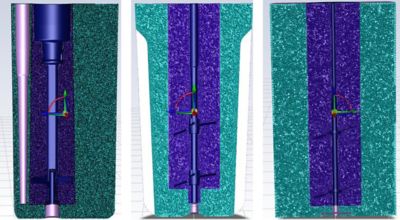Case Study
-
United States -
United Kingdom -
India -
France -
Deutschland -
Italia -
日本 -
대한민국 -
中国 -
台灣
-
Ansys는 학생들에게 시뮬레이션 엔지니어링 소프트웨어를 무료로 제공함으로써 오늘날의 학생들의 성장을 지속적으로 지원하고 있습니다.
-
Ansys는 학생들에게 시뮬레이션 엔지니어링 소프트웨어를 무료로 제공함으로써 오늘날의 학생들의 성장을 지속적으로 지원하고 있습니다.
-
Ansys는 학생들에게 시뮬레이션 엔지니어링 소프트웨어를 무료로 제공함으로써 오늘날의 학생들의 성장을 지속적으로 지원하고 있습니다.
“There’s a lot of internal expertise with Ansys Fluent. With Fluent, we can understand oxygen transfer at different operating conditions and tank geometries, and with the ROM technology we can get fast models from CFD data.”
— Luisa Attfield, Associate Data Scientist, GSK
GSK Drug Substance Development (DSD) is responsible for the generation of commercial, clonal cell lines; the development of a scalable, robust, and efficient upstream and downstream processes; and the transfer of these processes to commercial manufacturing scale. The cell lines are developed using small-scale bioreactors and then scaled up to large batch production. While the DSD team uses predictive modeling to control production processes, it is still nearly impossible to account for every single parameter. Cell line and bioreactor conditions need to be scaled correctly or the cells production rates will be less than optimal, which would require the DSD team to start production over again.
Challenges
GSK’s DSD team needed to overcome the inconsistencies observed in the performance of their processes and cell lines between different bioreactor scales. They select their cell lines in an Ambr15 bioreactor, but eventually these need scaled up to 2,000-liter bioreactors. Biological processes scale unpredictably; not only do they have to account for the differences between the bioreactor sizes, but they must also consider the cells’ sensitivity to changes. Predictive models developed at small scale require additional (often expensive) testing to calibrate for larger scales, and detailed vessel models may require proprietary third-party data. The DSD team also needed their solution to transfer code from the cell culture bioreactor model from gPROMS, the software on which it was developed.

The CFD and reduced order models were used in creating (left to right) Ambr 15, Ambr 250, and Sartorius 2000L STR bioreactors.
Engineering Solutions
The DSD team used Ansys Fluent to model the hydrodynamic profiles in GSK’s bioreactors and in different conditions using computational fluid dynamics (CFD). The CFD-based investigation was critical for achieving better scale-down models of the large-scale bioreactors, therefore enabling less expensive and more efficient experimentation for progressing biopharmaceutical assets through the pipeline. The DSD team used CFD models to create static reduced-order models (ROMs) to predict selected outputs at each scale, primarily the mass transfer coefficient (kLa). The ROMs acted as virtual sensors that provided inputs to the cell compartment model, created with the Modelica language.
The ROMs and cell compartment model were linked in a system model created in Ansys Twin Builder and exported as a digital twin runtime. Ansys Twin Deployer was used to convert these into a scaffolding Python command line application that connected to an industrial internet of things (IIoT) platform. It was important to transfer the code for the cell culture bioreactor model from gPROMS to Modelica to enable the deployment of the L1 digital twin. For that reason, Ansys engineers developed a Python code that translates the gPROMS code to a language that is compatible with Fluent. This is critical because it enables a seamless translation of future changes that GSK might apply in the gPROMS model to the Modelica language.
Benefits
- The CFD and reduced order models created Ambr 15, Ambr 250, and Sartorius 2000L STR bioreactors.
- The gPROMS cell model was converted to Modelica with good agreement.
- Combined ROM and cell models were compiled and exported as a twin model.
- A template runtime app was created and modified to illustrate deployment.
시작하기
엔지니어링 과제에 직면하고 있다면우리 팀이 도와드리겠습니다. 풍부한 경험과 혁신에 대한 헌신을 가지고 있는 우리에게 연락해 주십시오. 협력을 통해 엔지니어링 문제를 성장과 성공의 기회로 바꾸십시오. 지금 문의하기










